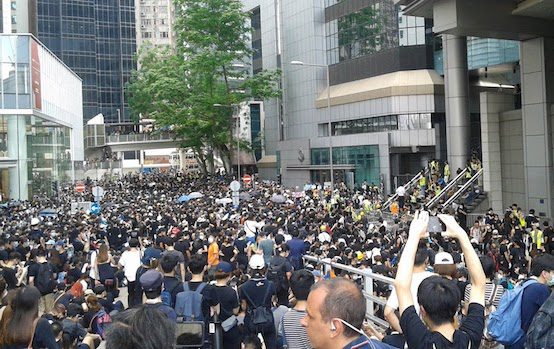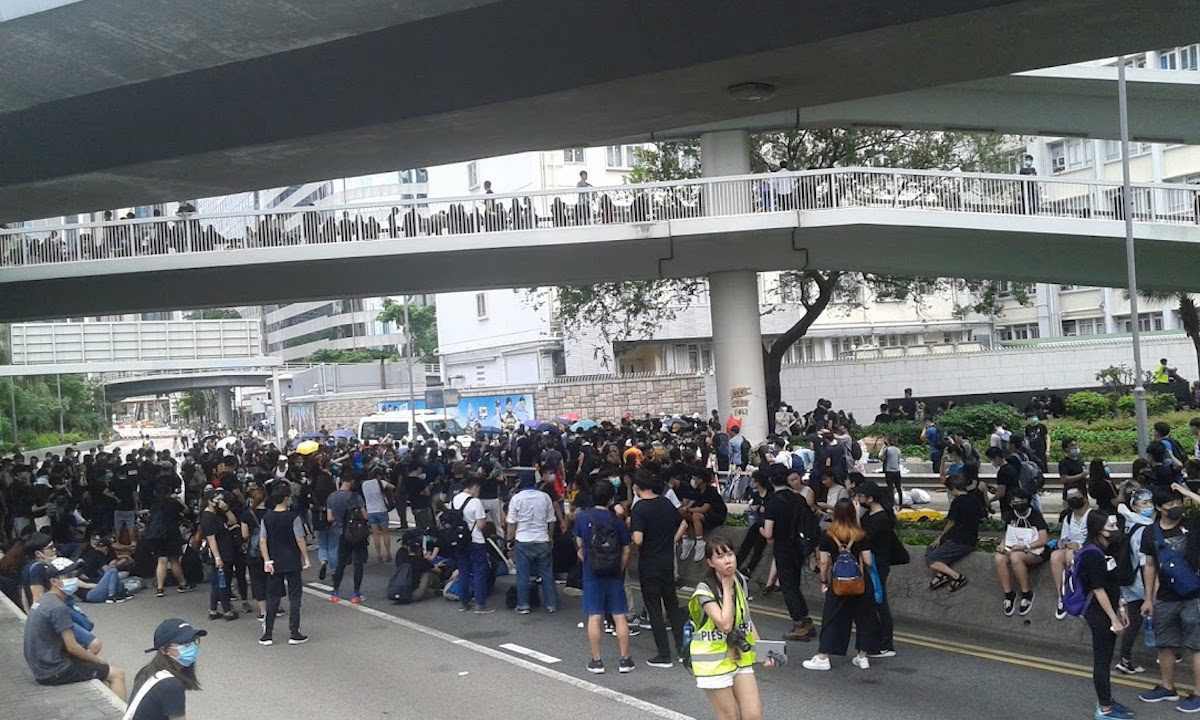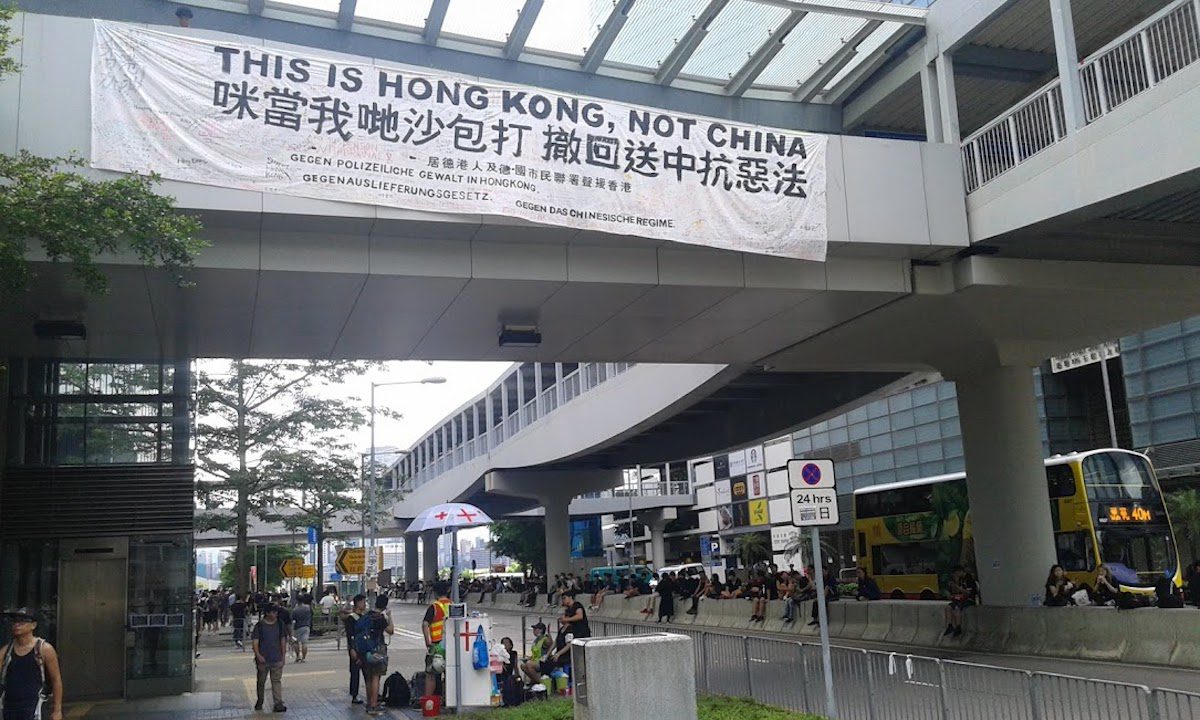Thousands of Protesters Swarm Hong Kong Police Headquarters

HONG KONG — “Release them!” The young shouted. A multitude of voices ringing out as one. “Release them! Release them!”
Thousands of young people in Hong Kong surrounded the Police Headquarters and its police force on Friday, June 21, to demand the release of all political prisoners.
In addition to these key demands, pro-democracy leaders stood outside the police headquarters and called for Police Commissioner Stephen Lo and Secretary for Security John Lee to resign, citing the brutal violence by riot police in last week’s protest.
On Thursday night young Hongkongers staged a peaceful demonstration at the Legislative Council Complex. The demonstrations were called when the government failed to meet the student activists’ deadline on Thursday. The protest lasted all night and grew larger with each passing hour Friday morning.
By noon, the young protesters had blocked several major roadways, including Harcourt Road, No. 1 Arsenal Street (where the Police Headquarters is located), and parts of Hennessy and Lockhart Roads, all three main causeways interconnecting the Legislative Council building and the Hong Kong Police headquarters. This time there would be no running away from the police.

The leaderless youth marched to the front doors of the police station and made their demands clear: Drop the use of the word “riot” to describe the June 12 protest, drop all charges placed on any of the protesters, release all detained activists (who they believe to be political prisoners), investigate individual police officers for excessive use of force, and completely withdraw (not suspend) the “evil” extradition bill, which sparked the unprecedented two-million person march just five days ago.
Dressed in black shirts and pants, the youth of Hong Kong made it clear to the authorities that this is their city and they will be heard. Many protesters pointed and shouted at the police officers, telling the officers that they should be ashamed for shooting gas canisters and rubber bullets at children. Don’t shoot us, others screamed. One sign read: “Stop Violence. We are not Rioter[s].” Another sign: “Do Not Shoot. We Are Hongkonger.”
In their peaceful frustration, longing and hope, I could hear their desires to remain free. To remain democratic. And those desires also seemed to say: We will not go quietly into that Communist night.
One young woman wore a black T-shirt with the phrase “No Punk, No Gain” in white. Most of the protesters wore white or blue surgical masks to hide their identity and also asked others to refrain from taking photos of their faces. In preparation of more tear gas and rubber bullets, several young men wore special gas masks, bullet-proof vests, and Saran-plastic wrap covering their arms.

Above the masses, hanging from an elevated walkway, read a sign: “This is Hong Kong, Not China.” For most of the younger generation in Hong Kong, they see their identities as being distinct from the mainland Chinese. They are the people of Canton. The Cantonese. Not Chinese.
For the young people of Hong Kong they feel their identity becoming lost in a great swell of history and time which requires them to stand united and defiant against mainland forces, seen and unseen, that would have them become something they are not.
CG Fewston is an American novelist, a former visiting scholar at the American Academy in Rome, and visiting fellow at City University. His most recent novel is A Time to Love in Tehran, published in 2015.
Comments